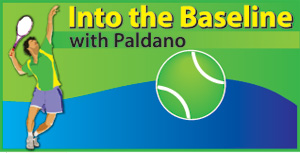Facing Davis Cup and Fed Cup – 2017
View(s): The origin of team events in Tennis dates back to 1900. The first Davis-Cup for men was between USA and Great Britain. This inter-nation idea of Tennis is now over 200 strong and serves as the ‘only basis’ for existence of the game in most of the countries which do not have the strength in quality players. To win either of these Cups a nation has to work its way to be in the World-Group and it takes years. Promotions are annual and there are five tiers to reach the top.
The origin of team events in Tennis dates back to 1900. The first Davis-Cup for men was between USA and Great Britain. This inter-nation idea of Tennis is now over 200 strong and serves as the ‘only basis’ for existence of the game in most of the countries which do not have the strength in quality players. To win either of these Cups a nation has to work its way to be in the World-Group and it takes years. Promotions are annual and there are five tiers to reach the top.
The recent trend shows top 20 players in the world are often not there in their national teams, making these events less attractive. The team events now are to boost the national spirit with the attachment and involvement of the Tennis fans. The main reason why the good players don’t give their services to the national team is the stress of their annual professional tour.
Current Speed
One has to be by the court side to realize at what speed the game is played at professional tours. I say so because most of us only see it on TV. TV reduces this speed to the convenience of its viewers with their tracking techniques of the camera and edits the matches to be more attractive and enjoyable. In real life the ball travels very fast and it is easy to miss the action being at the court side.
The difference in speed between group four of Davis-Cup, the lowest and the final Cup round is enormous. While consistency and other rudimentary tactics can register a win in groups three and four the first three groups needs more than these basic tactical approaches. In the final round players being professionals their movement in foot work and body reaction to complete the stroke is five to eight folds high in speed. The most feared tactic of at professional level is the ability to accommodate speed, generate speed and sustain it to finish a match. Federer’s performance at Australian-Open 2017 is a good example of this.
Creating teams
In player development what is there to ‘win’ beyond stroke making has become a mystery in Tennis. This is where the secret of success lies. A promotional body exists in every Davis-Cup country. The formalized method of teaching and hoping some players will find their way up to be good for Davis-Cup has fallen flat. The disappointment level with this approach is enormous and such systems do not give a fall back route what so ever. The result is disastrous to the nation.
It can be said that most of the countries are not able to put up a good team even to match group three of the Davis Cup. We are one of them. The folly begins with boosting local champion’s image sky high before their time. Tennis needs maturity of body and mind. It is not possible to acquire it in closed local and age group events. School Tennis is what most countries have today. It is not good even for group four of the Davis Cup. The age group that is in this is from 15 to 19 years of age. What awaits them is to give up the game- most unfortunate. As you would see all this rambling with which one could fill reams of pages is not the answer to Team building effort of a nation. This leaves us with a burning question.
Who is responsible?
I know Australia, USA, Germany and Japan had major drives to create good teams and players. Big multinationals gave their identity and sizable funding to the project. None of these countries could put out a good team. As far as I know only one player has reached the top ten of the world from these projects spanning good few decades. He is Japan’s Kei Nishikori. Having studied these projects I am skeptical even to believe a guaranteed blue print is possible or available to create a good player or a team.
Unlike in academic learning process, sportsmen reach the top by the process of ‘elimination’. This is a frightening realization which very few really know to be the reality of high performance sport. Winner takes it all- it is success at sword’s edge.
In this light it is clear that the individual’s who have passion to play, stay in sport and to clear the last hurdle is the winner every nation seeks. It makes player development more ‘cultural’ than formulated business of national bodies. This culture we had in the past was sustained by the Tennis clubs island wide. Now that it is gone and recreating them is a bleak prospect another formula has to be found. I don’t see any move towards it nationally amidst us at present.
The missing link
I have spoken to Tennis players who have been in Tennis over five decades they all have the same opinion as to our future. The missing link has to be found or appear or created or tailored soon if we are to face Davis-Cup and Fed Cup Challenge comfortably. If not the present trend in the game of snake and ladder will be witnessed for a good long time. Our group-3 Davis-Cup will be in July in Colombo.
–George Paldano, Former intl. player; Accredited Coach of Germany; National, Davis-Cup, Federation Cup captain/coach– georgepaldano@yahoo.com


